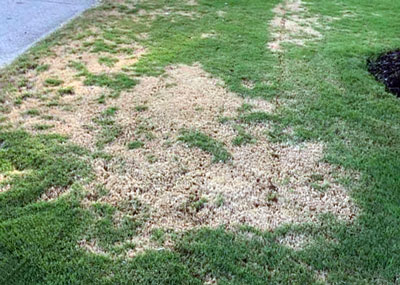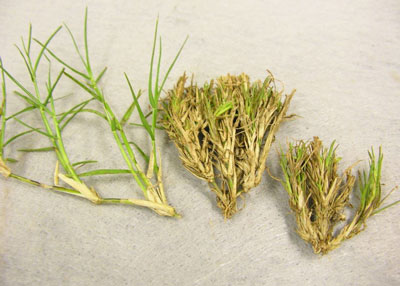Question of the Week – Number 2: August 13, 2020
“What is wrong with my bermuda? It just doesn’t look right.”
I’ve probably had more questions on two specific bermudagrass problems this year than in most of the rest of my career combined. And they’re unfamiliar to home gardeners, so I need to explain each of them carefully.

Pythium, or cottony blight. This fungal disease is showing up in bermuda lawns that have been coddled and overly cared for. Too much water and too much fertilizer. I realize that’s not always the case, but it seems to be the most common trend.
Afflicted grass turns brown almost overnight, and it can do so in really odd patterns. It almost looks like someone has thrown scalding hot water out onto the grass. If you do a Google web search for the disease you’ll find a lot of good information. Use the key words “university bermuda Pythium blight.”
Texas A&M has an especially good discussion of the disease:

Bermudagrass mites. I’ve gone almost an entire career without getting a lot of inquiries about these microscopic pests. 2020 has changed all that. This must be their year.
These are microscopic mites that make our common red spider mites look like giants. Like the mites that transmit rose rosette virus, they can only be seen with great magnification.
However, their impact on the grass is quite noticeable. It becomes stunted as the runners are greatly shortened. Pull up an affected runner and it will look like an old-fashioned shaving brush.
Unfortunately, there are no chemical remedies for the mites and, therefore, for their effects. But there are cultural things you can do. Clemson University outlines them in this link:
https://hgic.clemson.edu/factsheet/bermudagrass-mite/
